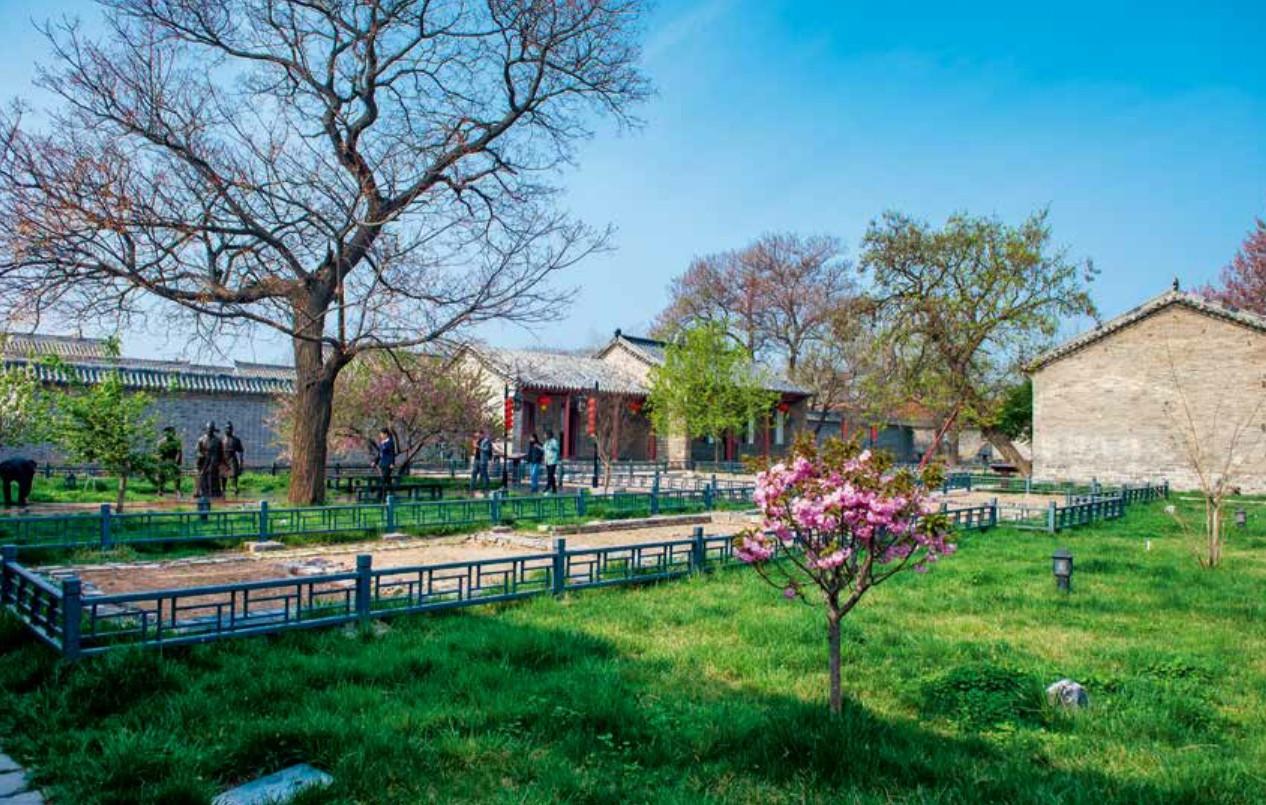运河岸,拾“遗”怀古
郭晓娟
京杭大運河在山东蜿蜒643公里,为沿线地区留下极为丰富的历史文化遗产。作为中国古代水利工程的一大杰作,戴村坝集“江北都江堰”“天下第一坝”“运河之心”等多项美誉于一身。
站在观景台上凝神远眺,戴村坝似巨蟒若长龙,横卧于汶水河道,气势磅礴。“每到丰水季节,万马奔腾的大汶河水会跨越戴村坝,飞流直下,形成一道巨大的瀑布,蔚为壮观。”戴村坝博物馆讲解员马海燕介绍,戴村坝汛期分流泄水,气势磅礴,轰鸣声震数里,宛若“虎啸龙腾”。由于季节原因,虽没能一睹“戴坝虎啸”的运河壮景,但其“阔而大”的气势仍让记者叹为观止。
戴村坝凝聚着古人智慧的高卓建筑技艺,得到古今中外人士的赞誉。清康熙皇帝在《敕封永济神开河治泉实迹》中对其这样描述:“此等胆识,后人断断不敢,实亦不能得水准如斯之准,真是创无前而建非常也。”19世纪初,荷兰水利专家方维观看戴村坝后由衷赞叹道:“此种工程,当十四、十五世纪工程学胚胎时代,必视为绝大事业。” 2010年,著名水利专家谭徐明在看过戴村坝的设计、构造和作用后,与其他大运河申遗考察组专家一致认为,戴村坝修筑难度大、技术含量高、功能发挥绝,既有精髓传承,又有独特创造,达到了中国古代治水巅峰,堪称“中国古代第一坝”。
古时,大运河在少水季节,常因水量不足断流、淤塞而停止漕运。明永乐年间,明成祖朱棣下令疏浚运河,工部尚书宋礼采纳了民间水利专家白英“引汶济运”的建议,分流汶水到南旺的最高处,从南旺分水南北,即所谓“七分朝天子,三分下江南”之说。戴村坝建成后,大运河制高点水量不足的问题得以破解,使船只畅通无阻,“八百斛之舟迅流无滞”,保障了明清两代500多年的漕运畅通,对中国南北经济交流、文化融合、社会发展起到了重要作用。
马海燕介绍,戴村坝分乱石坝、滚水坝、玲珑坝三段,玲珑坝比滚水坝高10厘米,乱石坝比滚水坝高30厘米;主石坝底为柏木,用黏土灌注,表层用一吨至六吨以上的条石镶嵌,以铁锔、铁扣相连,坚若磐石。随着大汶河水位的升降,三坝分级漫水,既保证了小汶河持续供水,又能排洪防溢。
历经沧桑岁月,任凭风吹浪打,戴村坝仍固若金汤,巍然屹立。如今,大汶河水经过戴村坝已不再流入运河,而是注入东平湖,但戴村坝在缓洪拦沙、控制河势、灌溉农田等方面仍发挥着重要的作用。
作为大运河上重要的文化印记,戴村坝被认定为“世界文化遗产”“国家重点文物保护单位”“国家水情教育基地”“国家水利风景区”。临坝而建的戴村坝博物馆,依托水工文化遗迹遗物,通过遗物展厅、模型展厅、图片展厅、引水展览厅、3D影院等,向游客集中展示戴村坝的历史、价值、功能以及京杭大运河的灿烂文化。
可以说,大运河是一条文明走廊,亦是一条鲜活的遗产、一段流淌的历史。大运河山东段各市级规划中共列入遗产点 152 处,四女寺枢纽、哨马营枢纽、临清闸、会通闸等水工设施,临清运河钞关、魏湾钞关、阿城盐运司、济宁河道总督署遗址等运河附属遗存,如珍珠般缀在大运河沿岸,连接着运河的命脉,成为大运河最亮丽的风景线。

随着中国大运河国家文化公园建设提速,大运河山东段文化遗产在保护和传承中迎来新生。京杭大运河遗产中具有代表性的水利工程南旺枢纽工程遗址,与汶上文庙、杨店镇家风家训馆等串联,形成大运河南旺枢纽研学旅行线路,并成为独具特色的“文化+考古”研学品牌;位于德州市境内的四女寺水利枢纽,随着开闸泄水,标志着一个世纪以来京杭大运河首次全线通水;曾居中国“八大钞关”之首的临清运河钞关,将变身展示钞关文化的片区……
循着时光的步伐,行走于大运河沿岸拾“遗”,既可细细品味尘封千年的历史,亦可感受古老运河在新时代焕发出的生机活力。
编辑/魏伟
Cherish Heritage and Recall the Past by the Canal
The Shandong Section of the Grand Canal, with a total length of 643 kilometers, has left a rich historical and cultural heritage for the areas along the section. As a masterpiece of ancient Chinese water conservancy engineering, the Daicun Dam enjoys such fine reputations as “Dujiangyan to the North of the Yangtze River”,“Worlds First Dam”, and “Heart of the Canal”.

The dam comprises three sections, i.e. the Luanshi Dam, the Gunshui Dam and the Linglong Dam. With the rise and fall of the water level of the Dawen River, the three dams release water at different levels, thereby not only ensuring the steady supply of water from the Xiaowen River, but also discharging floodwater and pre- venting inundation.
After going through vicissitudes, regardless of winds and waves, the Daicun Dam remains impregnable, and stands lofty and firm. Now, the water of the Dawen River no longer flows into the canal, but runs into the Dongping Lake via the Daicun Dam. However, the dam still plays a significant role in mitigating floods, retaining sediments, controlling the river regime, and irrigating farmland.
As an important cultural hallmark on the Grand Canal, the Daicun Dam has been recognized as a“World Heritage Site”, a “Key National Heritage Conservation Unit”, a “National Water Regimen Education Base”, and a “National Water Conservancy Scenic Area”. Relying on water conservancy culture rel- ics, the Daicun Dam Museum built near the dam gives an intensive introduction to the dams history, value, function and role, as well as the splendid culture of the Grand Canal to visitors by means of a relic exhibition hall, a photo exhibition hall, a diversion exhibition hall, a 3D cinema, and so forth.
The Shandong Section of the Grand Canal has a total of 152 heritage sites listed in municipal planning. Dotted on the banks of the canal like pearls, they are connected to its lifeblood, and become the most gorgeous sight there.
With the accelerated construc
tion of the Grand Canal National Culture Park, the cultural heritage of the Shandong Section has been renewed in the process of protection and inheritance.


